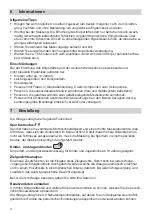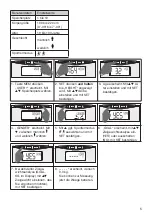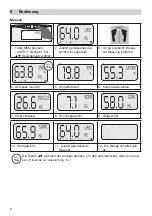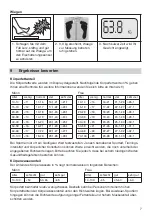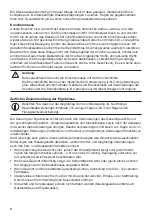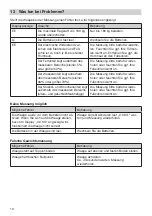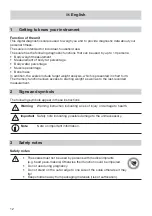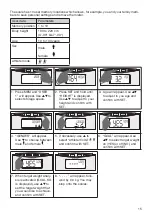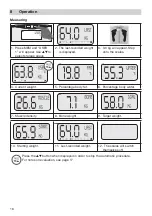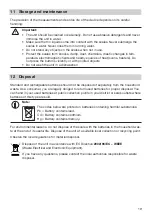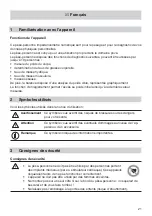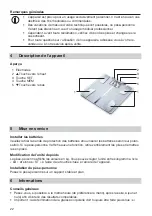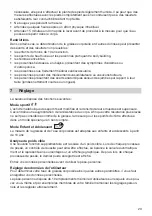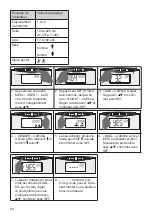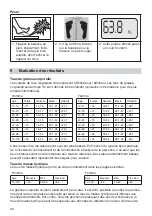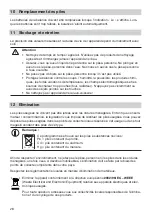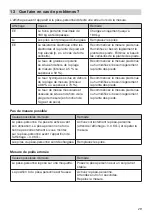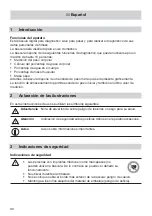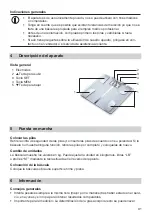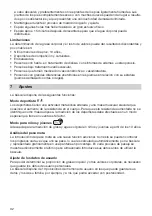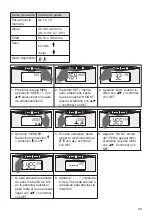
18
This scale is unsuitable for measuring body water in order to draw medical conclusions con-
cerning age-related water retention, for example. If necessary ask your physician. Basically, a
high body water percentage should be the aim.
Bone mass
Like the rest of our body, our bones are subject to the natural development, degeneration and
ageing processes. Bone mass increases rapidly in childhood and reaches its maximum be-
tween 30 and 40 years of age. Bone mass reduces slightly with increasing age. You can reduce
this degeneration somewhat with healthy nutrition (particularly calcium and vitamin D) and
regular exercise. With appropriate muscle building, you can also strengthen your bone struc-
ture. Note that this scale will not show you the calcium content of your bones, but will measure
the weight of all bone constituents (organic substances, inorganic substances and water). Little
infl uence can be exerted on bone mass, but it will vary slightly within the infl uencing factors
(weight, height, age, gender). no recognised guidelines or recommendations relating to bone
mass measurement.
Attention:
Please do not confuse bone mass with bone density.
Bone density can be determined only by means of a medical examination (e.g. com-
puter tomography, ultrasound). It is therefore not possible to draw conclusions con-
cerning changes to the bones and bone hardness (e.g. osteoporosis) using this scale.
Results in relation to time
Remember that only long-term trends are important. Short-term fl uctuations in weight
over a few days are usually the result of a loss of fl uid.
The interpretation of the results refl ects changes in total body weight, percentage of body fat
and body water as well as muscle density, and takes into account the length of time over which
these changes take place. Sudden changes within days must be distinguished from medium
term changes (over weeks) and long term changes (months).
A basic rule is that short term changes in weight almost exclusively represent changes in
water content, whereas medium and long term changes may also involve the fat and muscle
percentages.
If your weight reduces over the short term, but your body fat percentage increases or re-
•
mains the same, you have merely lost water – e.g. after a training session, sauna session or
a diet restricted only to rapid weight loss.
If your weight increases over the medium term and the body fat percentage falls or stays the
•
same, then you could have built up valuable muscle mass.
If your weight and body fat percentage fall simultaneously then your diet is working – you are
•
losing fat mass.
Ideally you should support your diet with physical activity, fi tness or power training. This way
•
you can increase your muscle percentage over the medium term.
Body fat, body water or muscle percentages should not be added (certain elements of
•
muscle tissue also contain body water).
Replacing batteries
10
The batteries in the scales must be replaced if the message “Lo” appears in the display. If the
batteries are too fl at, then the scales will switch off automatically.
Summary of Contents for KFW 1303
Page 48: ...48 1 10 2 3 K...
Page 49: ...49 4 1 2 SET 3 MEM 4 5 2 3 4 5 1 1 5 LB stones ST...
Page 50: ...50 6 15 10 Bodybuilding 7 10...
Page 52: ...52 7 GOAL KG SET 8 0 0 kg 8 MEM 1 USER 1 2 0 0 kg 3 4 5 6 7 8 9...
Page 54: ...54 10 100 50 50 65 65 10 100 45 45 60 60 30 40 D...
Page 55: ...55 10 Lo 11...
Page 56: ...56 12 Pb Cd Hg 2002 96 C WEEE Waste Electrical and Electronic Equipment...
Page 57: ...57 13 EE 180 180 Lo EE 5 50 36 70 0 0 KG 0 0 KG 4...
Page 58: ...58 1 2 3 r...
Page 59: ...59 4 1 2 SET 3 MEM 4 5 2 3 4 5 1 1 5 LB ST...
Page 60: ...60 6 15 10 7 10...
Page 62: ...62 7 GOAL KG SET 8 0 0 kg 8 MEM 1 USER 1 2 0 0 kg 3 4 5 6 7 8 9...
Page 64: ...64 B 10 100 50 50 65 65 10 100 45 45 60 60 30 40 D B B...
Page 65: ...65 B B B B 10 Lo 11 12 B...
Page 67: ...67 B 0 0 KG 0 0 KG 4 14 24 3 5 218 89077 88524 109451 62 2 495 658 54 90...
Page 86: ...86...
Page 87: ...87...
Page 88: ...88 753 559 1209 Irrtum und nderungen vorbehalten...

